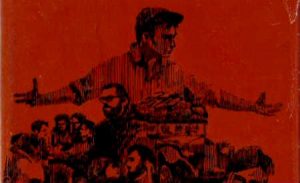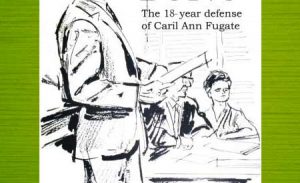
When I wrote “Inherited Alchemy” my intentions were dualistic: to pinpoint the qualities Tom Waits held as a songwriter that were worthy of imitation, and flat-out, shameless hero-worship. Judging by the response I’ve received, my goals were achieved; yet there was a single concern the readers constantly brought to my attention, “Who is Tom Waits?” In my attempt to glorify Waits as a “Premier Musical Architect” or a “Preeminent Songwriting Genius,” I neglected my readers by assuming everyone revered Waits as much as I did. So, as way of humble apology, I offer a crash course in essential Tom Waits music through the “magic of cover songs.”
An explanation is needed for why I chose covers of Waits’s music, instead of his original studio recordings, and it comes down to accessibility, familiarity, and ease of listening. Even though we live in the modern age of “I can download all of Kevin Bacon’s albums,” some of Waits’s music isn’t easily found, appearing only on soundtracks or benefit concert albums (Waits 2006 release Orphans contains many of these harder to find gems, but a $40 investment for B-sides, demos, and rarities is not something a new listener finds appealing). As for familiarity, I present either a song or an artist that is on current rotation at your local soft-rock, easy listening, or country/western station. The aspect of “ease of listening” is most appreciated (though they don’t know it yet) by those not baptized under the Style of Waits: his junkyard symphonies, the vocals peppered with guttural howls and drunken slurs, and the episodic use of a falsetto that would make Micheal Jackson want to switch to baritone. After much deliberation, agitation, exasperation, and consternation (“Look Ma, I’m Al Sharpton”), I present to you:
The Five Best Covers of Tom Waits’s Songs
“Trampled Rose”
– Appears on Raising Sand by Robert Plant and Alison Krauss (2007)

Alison Krauss’s version is haunting, truly spectral, “possessing” in the sense of ghost and phantoms. This isn’t a simple cover song, but the transposition of the abnormal into the realm of supernatural, creating emotional tremors while leaving spiritual ripples in the wake. Krauss’s voice wafts above a collage of sound, an Appalachian Banshee weaving a story of heartache and betrayal, love found and paradise lost. Underneath, the melodic mesh of “junkyard instrumentation” (including a pump organ, a toy piano, Taiko drums, xylophone, and dulcimer), the listener is bombarded by a constant murmur of atmosphere and ethereal presence that make this song (dare I say it) better than the original.
“Long Way Home”
– Appears on Feels Like Home by Norah Jones (2004)

Norah Jones brings sweetness and innocence to this confession of a restless wanderer laying bare the truth of his indiscretions. Jones’s Mid-Western Shuffle is a dusty reflection of Waits’s bar-room Jazz, but it’s pleasant and welcoming, the musical equivalent of a hot coffee in Waffle House after fourteen hours behind the wheel. The upright bass provides the quintessential “hop-along” groove, while Ms. Jones delivers this tale of discontent and reconciliation with the same delicate care a choir angel sings “Amazing Grace.” Both familiar and foreign, this song strikes a chord on the heart strings, and is definitely worth a second, third, or thirty-third listen.
“Downtown Train”
– Appears on The Very Best of Rod Stewart by Rod Stewart (2001)

Rod Stewart’s cover of this “hit-song-incognito” brought attention to Waits as a “hit” songwriter when “Downtown Train” rocketed to #2 on the Singles Chart in 1990. Waits’s original version contained all the necessary material: the catchy melody, the upbeat tempo, and the lyrics of love’s expectation. Using these same elements, and mixing them with his sultry, yet macho vocals, Stewart shaped this underground lament into a pop ballad of longing, the ideal “upbeat-blues.” The average radio listener appreciates “The Rod’s” enthusiasm and performance, especially for a song that evokes mental images of street corner girls and midnight trains. However, there are those who call themselves “true fans of Waits” (i.e., stalkers) that think Stewart’s version lacks the depth of feeling that Waits’s original recording held, but this is best judged by the listener.
“Temptation”
– Appears on The Girl in the Other Room by Diana Krall (2004)

Diana Krall added a new element to this song: sensuality. Though not as “steamy” as the Holly Cole version, this song lets you know that something bad, probably “naughty,” is about to happen, and you want to be there when it does. Krall imitates this lusty lullaby with a sense of the feminine mystique that Waits’s falsetto fails to capture (God bless him, he tries). This song sets the listener into a frame of mind with neon candlelight, the crack of pool balls in the back, and a beautiful stranger beside you, just past drunk, wearing a look of desperation and passion. Temptation isn’t wanting what you can’t have, it’s being able to have what you don’t need.
“Ol’ 55”
– Appears on The Very Best of the Eagles by The Eagles (2002)

This rendition deserves a mention for it’s chronological significance: the very first Tom Waits cover song. The Eagles and Tom Waits were label-mates in the early 70’s, and “Ol’ 55” seemed perfect for the Eagles. Whether it was written for them or just a similarity in styles, the only difference between the two tracks is a steel guitar and Waits himself. Although The Eagles’ version is the better known, Waits’s version radiates the “blues,” while the Eagles’ wanders into “country,” so preference in song depends on whether one drinks in a bar that sells more Heineken or Bud Light.
On a final note, I’ll make mention that there are those who feel that cover songs are the trademark of a tired artist, one that’s either too lazy or otherwise incapable of producing new material. While this is true of some artist (like all of Johnny Cash’s American Recordings albums [which are also worth a listen]), the complexity of the “cover song” phenomenon is much more romantic. Most songwriters view their songs as “children” or “babies,” implying a paternal bond of care and affection, while the cover artist’s relationship to the song is that of spouse or lover, a union of intimacy and desire, seeking completion and fulfillment from someone else’s creation.
Sometimes the result of a cover song resembles a beautiful marriage (Sheryl Crow covering Led Zeppelin’s “D’yer Maker”), while other times resembling a disturbing cohabitation between a man and a chimpanzee (Dolly Parton covering Led Zeppelin’s “Stairway to Heaven”). So, with minimal stress, discomfort, and illegal downloads, I hope you enjoy these tunes, and may they lead you into further exploration of the “GENIUS of TOM WAITS”!!! (That ending wasn’t too much I hope, I toned it down, really I did.)




